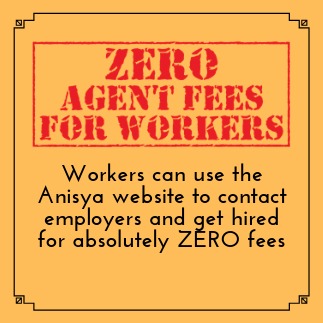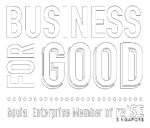Life is better when it is short, healthy and full
In his eulogy to the late Mr Lee Kuan Yew at the private ceremony in the Mandai Crematorium on Sunday (Mar 29), Prime Minister Lee Hsien Loong said that his father’s “values, his love, and his words – these will stay with us, inspire us, and live on in us for a long, long time”. (http://www.channelnewsasia.com/news/singapore/he-will-leave-a-big-hole/1751914.html)
Of note are these paragraphs, and also PM Lee’s reference to a speech that PM LKY made in 1972 (see below) about living life to the fullest.
“When we are young, we think our parents will always be there. After we grow up, as we watch them age and grow frail, we know rationally that one day we will have to say farewell, yet emotionally we find it hard to imagine it happening. Then one day our parents are really gone, and so we are left with a sense of loss and pain. That is the human condition.
“Pa had thought long and hard about this, as he had about many things. When preparing what to say to you today, I remembered that once upon a time he had made a speech about growing old and dying, to a gathering of doctors. I asked for it but nobody else remembered it – except Janadas, so that gave me confidence I had not imagined it. We searched for the speech, and eventually after a heroic effort, YY found it. Pa had made it to a congress of cardiologists, very long ago – in 1972! Forty-three years ago. I must have read it at the time, and it left such an impression on me that I remembered it across four decades – or it could be I’m just growing old and remembering long ago things.
“I re-read the speech with delight. It was vintage Lee Kuan Yew – thoughtful, erudite, elegant, witty, but with a deeper point. Sadly, nobody makes such after-dinner speeches like that any more. He titled it ‘Life is better when it is short, healthy and full’. He talked about cardiac health, decrepitude, the right to die, advanced medical directives (though before the term had been inveted), and much more. You have to read the full speech yourself, because it is impossible to summarise, but it is well worth reading.
“I will just share one quote: ‘Life is better short, healthy and full than long, unhealthy and dismal. We all have to die. I hope mine will be painless. As de Gaulle said: ‘Never fear, even de Gaulle must die’, and he did.’
“Papa had a long and full life. He was healthy, active and vigorous, until advanced old age. He used to say that life is a marathon, not a sprint. Papa’s marathon is done. He went away peacefully. He will leave a big hole in our lives, and in our hearts. But his values, his love, and his words – these will stay with us, inspire us, and live on in us for a long, long time.
“Farewell, and rest in peace, Papa.”
Speech by Prime Minister Lee Kuan Yew at the Fifth Asian-Pacific Congress of Cardiology Delegates Dinner at Shangri-La Hotel
(13 October 1972)
Mr. Chairman, Professor Charles Toh , Baron Professor Lequime , Sir Kempson Maddox , Distinguished Specialists, Ladies and Gentlemen:
I am overawed to find myself in the presence of so many eminent heart specialists. It’s a daunting prospect to have to talk to some 500 people who, even as I speak, will run their professional eye up and down me, checking my age against my weight, height, the amount of alcohol I may be showing, either on my countenance or lack of crispness in my speech.
The reason I am here, of course, is that your Chairman gives me an annual check-up to see whether the old ticker is degenerating faster than it should. Every year, we go through the routine: electrocardiogram (ECG) lying down; ECG sitting up; ECG, after going up and down steps at a certain speed for several minutes; ECG to discover how quickly the pattern returns to normal after this exercise. Each time I leave a little encouraged. He knows I am suspicious. So he never tells me that all is well. His is the subtle approach—a quiet nod, and a hum of satisfaction as he runs through the stream of paper graphing my heart-beat, and the very audible asides to my general physician about an athlete’s heart. It gladdens mine. He knows that I read up all the medical articles in magazines ostensibly meant for more than just the average layman. He knows I cut out saturated fat— lean meat, preferably beef, only selected parts of mutton and pork, and that only occasionally. Even in vegetable oils, some are to be avoided like coconut, which is saturated.
Yet despite all this hotch-potch collection of dos and don’ts from articles and tips from friends like Professor Monteiro, I had all this while laboured under a grave misconception—that the heart should never be strained, that as one gets older one should be careful not to push the ticker too hard. So violent exercises like badminton and squash are to be eschewed. More leisurely ones unlikely to induce cardiac failure like golf or swimming are for me.
Then one day I was playing golf with a surgeon friend. He had read up the latest on aerobics. He said the heart should be pushed to its uttermost limits to dilate all the arteries throughout the body and in the heart itself, and to increase the pulse rate to its maximum, for as long as possible. It will improve heart muscle tone, and after a few weeks, the lethargic feeling will go. I asked him if he had tried it out himself. Well, he said, running on the spot for him, bringing his knees as high up to his chest as possible, that was difficult because he was well in his 50s. So he walked on the spot. But he assured me that he had got quite a few friends who had complained of feeling lethargic and slothful to run on the spot, more and more minutes each day, and now they are almost bursting in song with a spring in their steps. None have dropped down dead. I asked him whether they were his friends or his guinea-pigs. He countered that it was the results of experiments by a Canadian heart specialist. He recounted a case of a Canadian pilot who was invalided because of heart problems. After one year of aerobics he had his pilot’s licence and status restored.
This sounded convincing. So I tried it, but cautiously. I walked on the spot. Nothing happened. So I began to run, but gently, on the spot. Still no ill-effects. So I increased it day by day. Then one day after a round of golf, I ran for five minutes. Before that I got my surgeon to take my pulse rate. He said it was normal, 70 plus. After five minutes ‘Marvellous, 140’. After three to four minutes, back to 70 plus. Marvellous! Young man’s heart was his verdict.
If only I had known earlier, I would have been younger at heart all these past years!
My belief: life is better short, healthy and full than long, unhealthy and dismal. We all have to die. I hope mine will be painless. As de Gaulle said, ‘Never fear, even de Gaulle must die’, and he did. And how lucky—heart failure during sleep.
Of course, it is preferable to die at home in one’s bed—not in a motel. Just think of the embarrassment to one’s children, all the gossip that the extra excitement of unaccustomed company caused a defective heart to falter.
When I was a young man, I considered the various professions that might be satisfying and fulfilling. I ruled out medicine. It was too noble. The oath of Hippocrates—to keep alive a patient as long as possible.
Sometimes, as I cast my mind back to my teenage years, I wonder, perhaps, whether I should not have been a doctor. Never mind the nobility. It’s a marvellous profession, the Hippocratic oath: everything should be done to keep the patient alive. Patients are kept alive longer with tremendous leaps in knowledge, breakthroughs in both medication and surgery. And, of course, it creates more demands for services of doctors. Like the car, so the body. When the carburettor gives way—repair or change it. When the piston rings wear out—change them. When the pistons get too small for the cylinder bore—grind-bore the engine block and put bigger pistons. If the piston block cracks, put in a new piston block. Better still, take the whole engine out and put a brand new one. Then door-hinges give way—change hinges, if necessary, change doors. Constantly repaint and retouch. With every passing year, it becomes more expensive to keep the car going. So beyond a certain point—I think the third year, it becomes more economical to sell the car and replace it. Now in America, the economics have been worked out one stage further: don’t buy a car, lease it for two years.
If only one could do that with life! There is no point in owning a decrepit body with daily deterioration making it ever more expensive to stay alive. But you cannot change the human body. So it is good for doctors. Your heart timing is wrong, they put in a timing device. Then something else like the kidney gives way, in which case a kidney machine will keep the patient alive for years and years. But for what purpose?
Then transplants, just like spare-parts in cars, and cortisones to prevent rejection of transplants, and sterile conditions to avoid infection which with cortisones will be hard to detect. It is a marvellous never-ending process. Each discovery prolongs life and moves the degenerative failure to some other part of the body.
The medical profession is the biggest and best trade union of all unions. It is a closed shop in all countries, and in some countries, even when you cross state boundaries, they make you become an intern or a houseman for many years before you are allowed to practise on your own. Every breakthrough in medical science prolonging life creates more patients, as degenerative failures take place in some other part of the human physiology. And now geriatrics and gerontology have become respectable, but not yet lucrative branches of medicine because pensioners get poorer with galloping inflation in so many Western countries.
So knowing this, the medical profession now promise, or hold out the prospect, not only of prolonging life but of prolonging youth. This is an entirely different proposition. That means the man or the woman can work, and make the money to pay his medical bills, which his pension cannot afford him to do.
Tonight, I have a unique occasion of some 500 heart specialists as a captive audience. Can I say that the kindest thing you can do for me—if ever I have a partial cardiac failure or a stroke—is to let me die as painlessly as possible. Nothing is more pitiful than to have stroke after stroke after stroke, with each one, both physical movement and intellectual capacity reduced until one becomes a vegetable.
One evening at dinner last year, I had a morbid discussion over coffee. My guest had coffee and liqueur. I stuck to my wine. We discussed the right to die—euthanasia. He was a very high-powered American executive. He had thought the whole question through. He said, ‘But after the first stroke and when the time has come to make the decision, one finds life is still sweet. And you will not make the request to die’. I said, ‘In that case, make the request before the event’. He said, ‘You will withdraw it when the event occurs, or you may not be in fit mental condition to exercise your judgement’. I countered, ‘In that case, let the decision be taken by a close relative or a friend’. He said, ‘A close relative? God forbid, he is after your money! He may believe he is in your will’. I said, ‘Then a friend’. He says, “He may be such a good friend that he believes, despite the fact that you are only 30% of what you were, it is still worth giving you that 30% and he will keep you alive’.
There will never be a final solution to the problem of life and death, other than death itself. And whether it is philosophy or logic or medicine or morality or law, we are all human beings with human imperfections, both as individuals and as societies. And Singapore is an imperfect society. But I hope, despite all the imperfections, you have found some pleasure in having come here.
View all posts in Anisya Blog
Posted on 29 Mar 2014

Help FDWs avoid debt
Anisya can help with the MOM paperwork

Found a suitable worker on Anisya? We can help with the MOM paperwork. Our service fee is $450. Click here for more info.
Full service hiring available

Need to hire an FDW in a hurry? Let Anisya help you with screening, short-listing and scheduling interviews with workers, and managing all the MOM paperwork formalities! More details here.
Anisya Web Services works in partnership with Anisya LLP (MOM License 12C5866) for MOM related transactions.
Anisya is a proud Social Enterprise member of the Singapore Centre for Social Enterprise (raiSE) and the Business For Good community which promotes the use of business for social impact.
